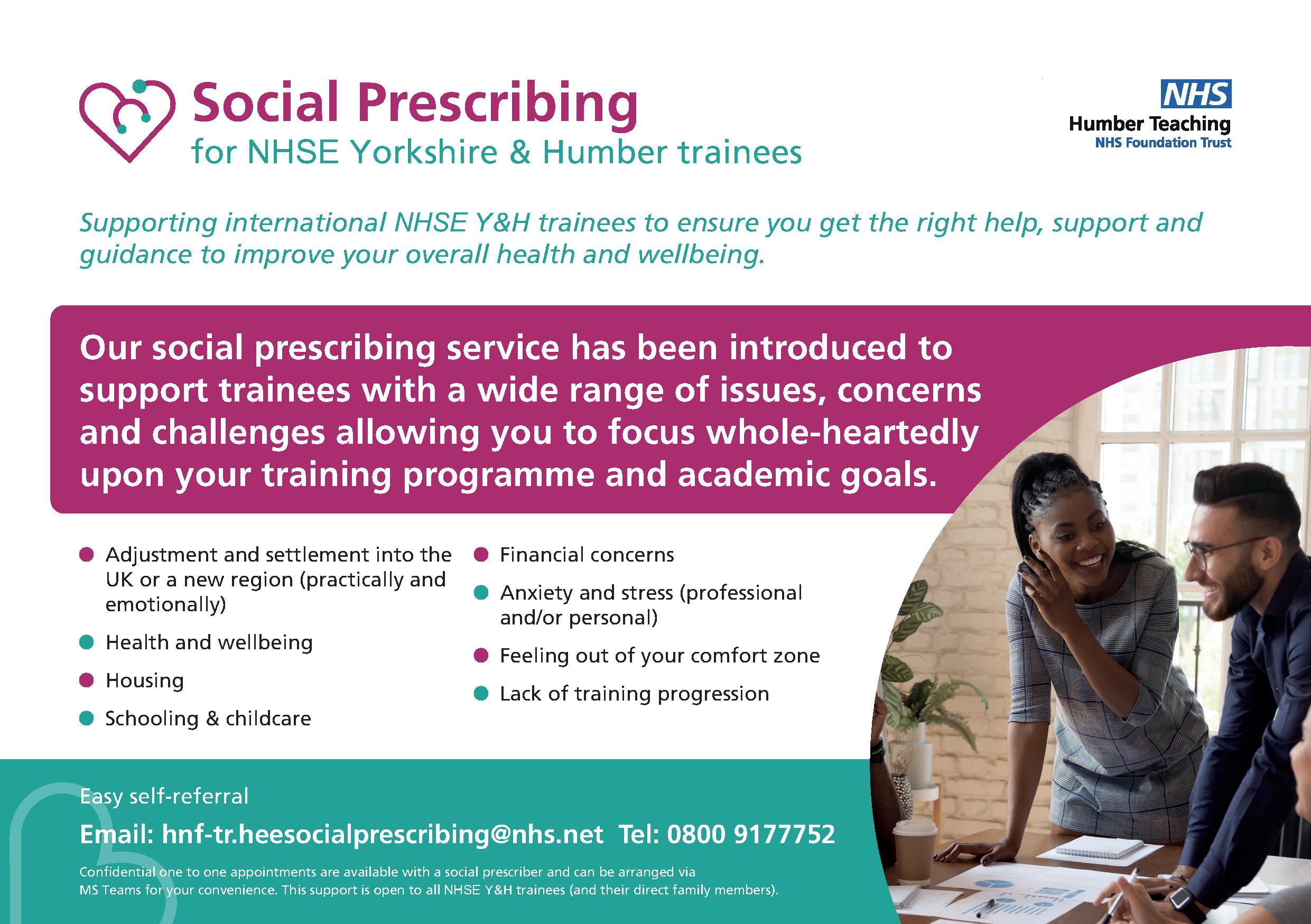Social Support and Integration
Getting to know Yorkshire and Humber
As part of your acclimatisation to working and living in the UK, we would encourage you to get to know our region in your leisure time. Yorkshire and Humber are home to some wonderful beauty spots, including a vast array of reservoirs, walking and hiking routes. We are also lucky to have four large, thriving cities (Hull, Leeds, Sheffield and York), as well as many charming small towns and villages. We hope that you can make the best of working in the region.
You may find the following websites to help you familiarise yourself with leisure activities in the region:
- Welcome to Yorkshire
- Visit Yorkshire
- YorkshireNet
- LeedsList
- Visit Leeds
- Welcome to Sheffield
- Visit York
- Visit Hull
Yorkshire and Humber Social Prescribing Service
"I wholeheartedly recommend this service to anyone finding themselves in need of guidance or support. The level of care, empathy, and understanding extended to me was unparalleled."
IMG New to the NHS, August 2023

We have a dedicated service run by Humber Teaching NHS Foundation Trust to help support your move to the area of your training programme, wherever that happens to be throughout the Yorkshire and Humber region. We have social prescribers that can offer you guidance and help to lead you through the transition.
To find out more about the service and how to self-refer, please visit our Social Prescribing webpage.
IMG Handbook
A handbook for Yorkshire and Humber IMGs, written by Yorkshire and Humber IMGs, it contains a wealth of information specific to our region, including securing accommodation, shopping, transport and much more.
IMG Virtual Networking Sessions
The SuppoRTT for International Medical Graduates (IMG) Future Leader Fellow regularly runs Virtual Networking Sessions for Postgraduate Medical and Dental IMGs within Yorkshire and Humber. Featuring guest speakers, these sessions are hosted on Microsoft Teams and provide you with an opportunity to connect with other IMG PGDiTs and learn from the experiences of colleagues.
For details of upcoming networking sessions, and to view recordings of past events, please see Courses and Events for IMGs.
IMG Podcast
One of our previous Future Leader Fellows for IMG Support developed a podcast series, which aimed to share the experiences of other IMG Postgraduate Doctors in Training (PGDiTs) and provide useful tips for your training journey. An overview of each episode and listening link can be found below:
| Introduction | A short introduction to the purpose of this podcast series |
| Episode One | GP Postgraduate Doctor in Training (PGDiT), Dr CJ covers tips for the portfolio and how to escalate to seniors as an IMG doctor |
| Episode Two | Dr Elyas, Paediatrics ST4 shares her journey into training and the challenges she faced |
| Episode Three | Dr Cristina shares her experiences of communication challenges at work and working less than full time |
| Episode Four | Dr Kike describes the challenges she faced with bringing her family to the UK as well as challenges with the visa process as an IMG doctor |
| Episode Five | Dr Mahwish shares experiences from her trust grade job, reverse mentoring, resilience and self-compassion as an IMG |
| Episode Six | Differential Attainment GP TPD, Dr Robert Amedzro, shares his views on the common challenges faced by IMG Postgraduate Doctors in Training (PGDiTs). |
| Episode Seven | EDI Lead and HR Manager, Mano Jamieson, discusses what HR teams can do to improve the IMG transition, recognising racism and how to respond to microaggressions |
| Episode Eight | Dr Tolu, a trust grade IMG doctor, shares her experience of adapting to working in the UK, overcoming communication difficulties and social isolation |
Language Support
Dictionary of British Slang
This dictionary of British slang includes popular words and phrases that you might hear in the UK and will help you with your own spoken English.
Doctors Speak Up
Doctors Speak Up is a multimedia resource that has been developed to address the language and communication needs of International Medical Graduates (IMGs) working in Australia. Although some of the content is specific to Australia, most of it is useful for anyone practicing medicine in an English speaking country.